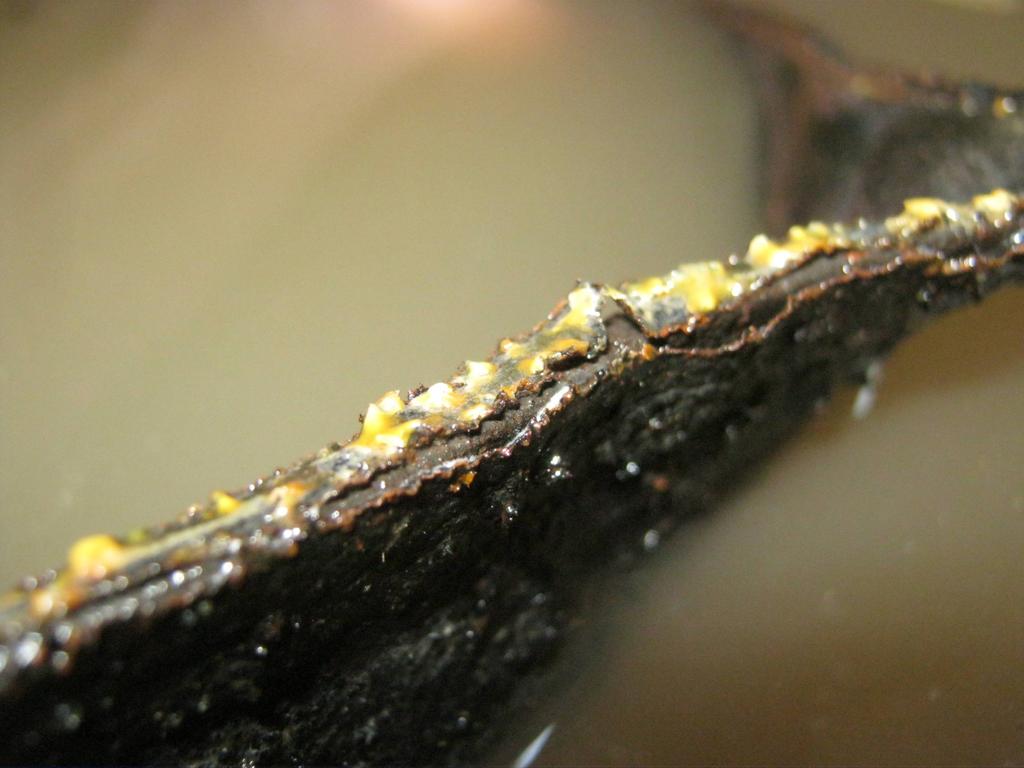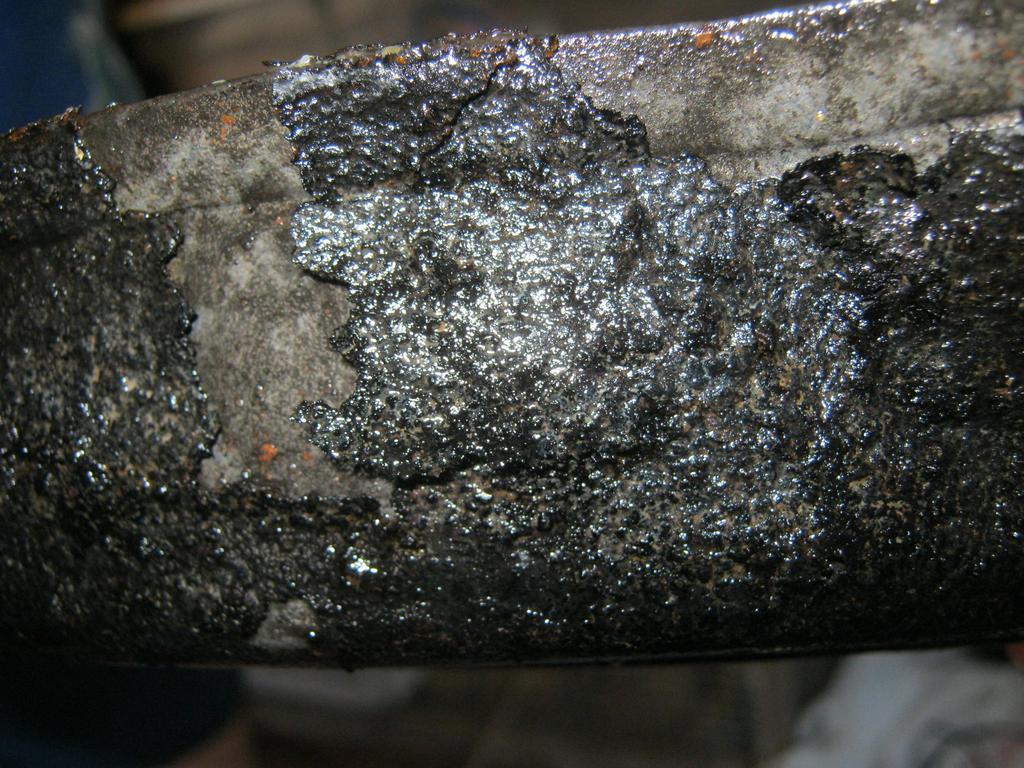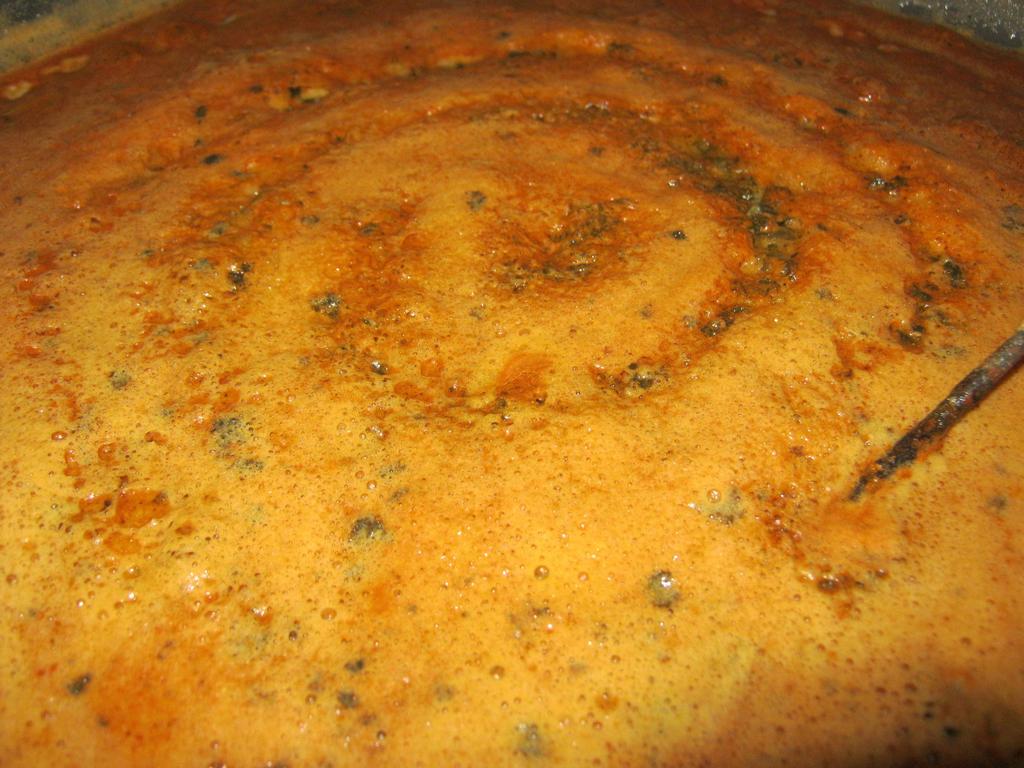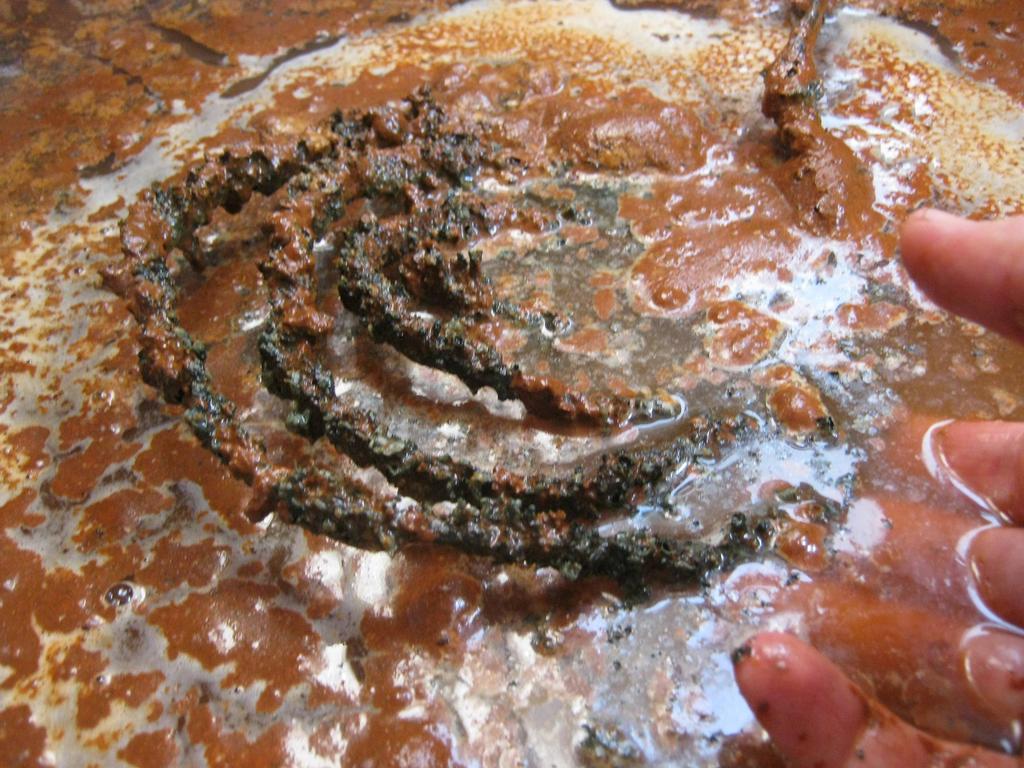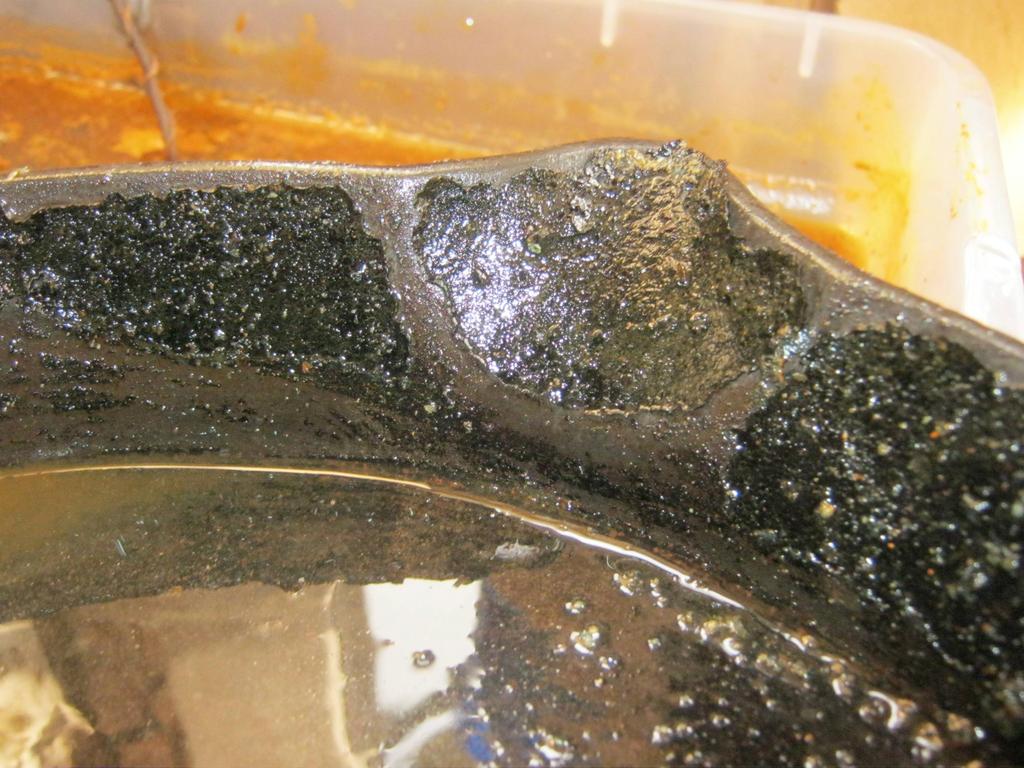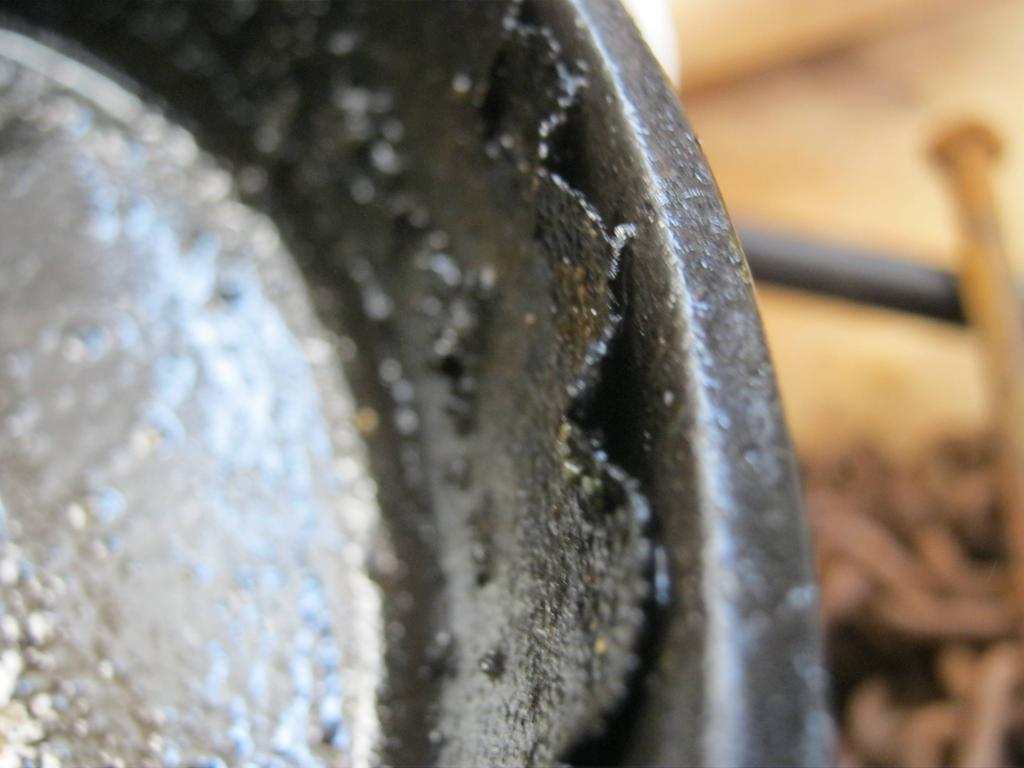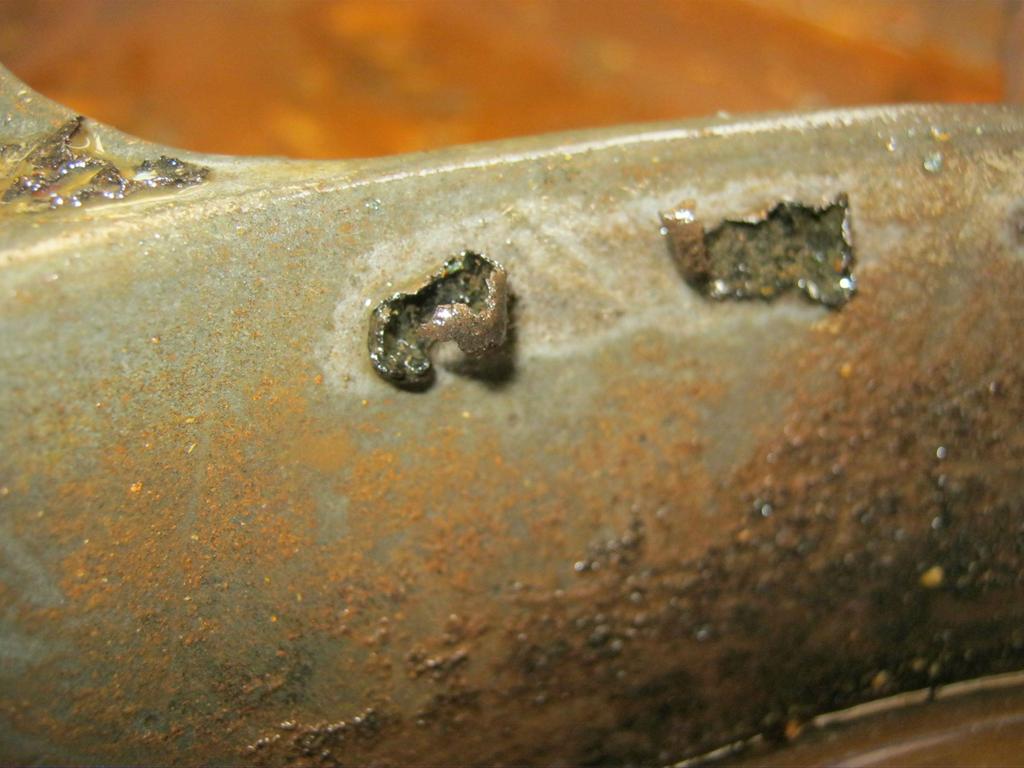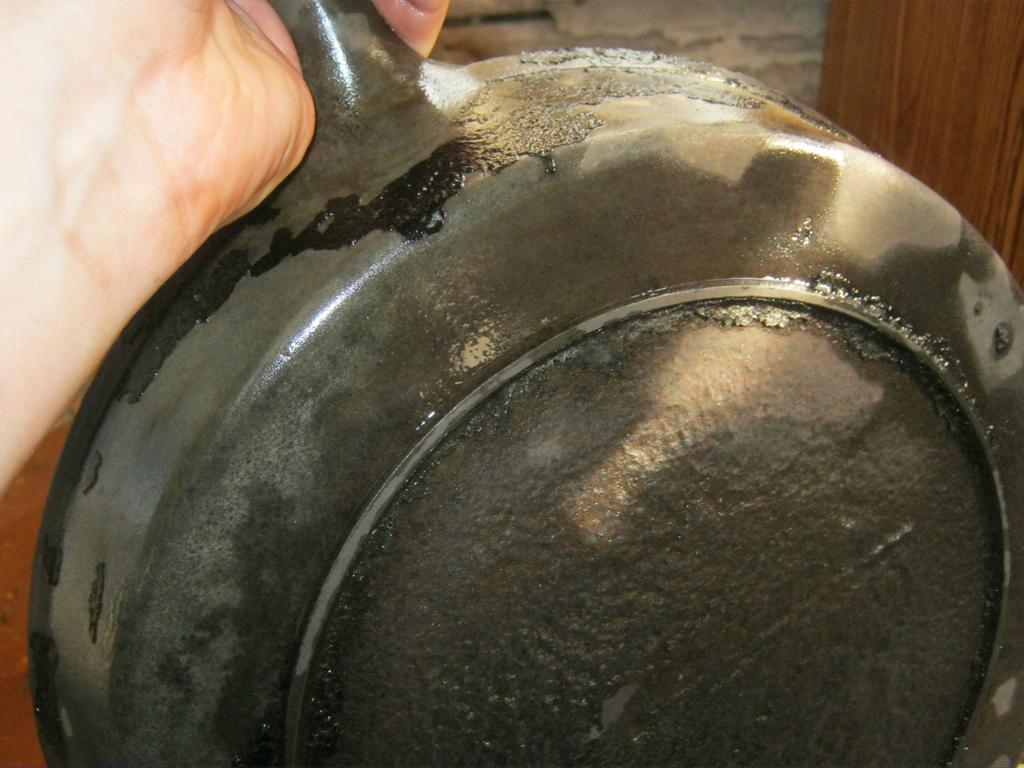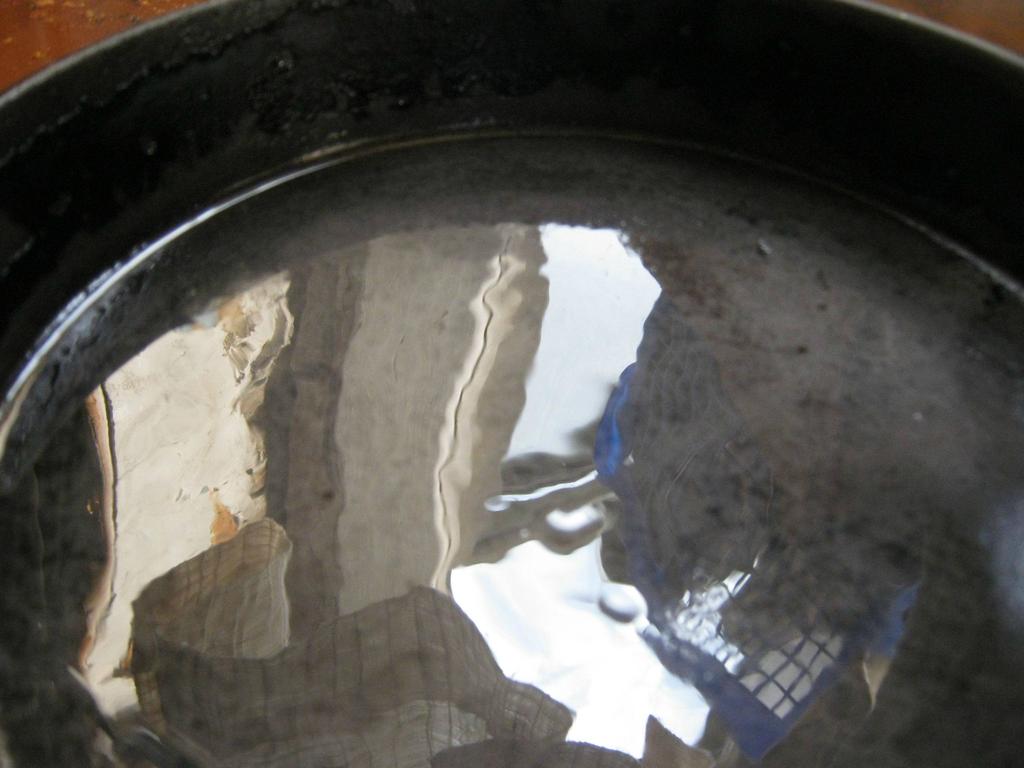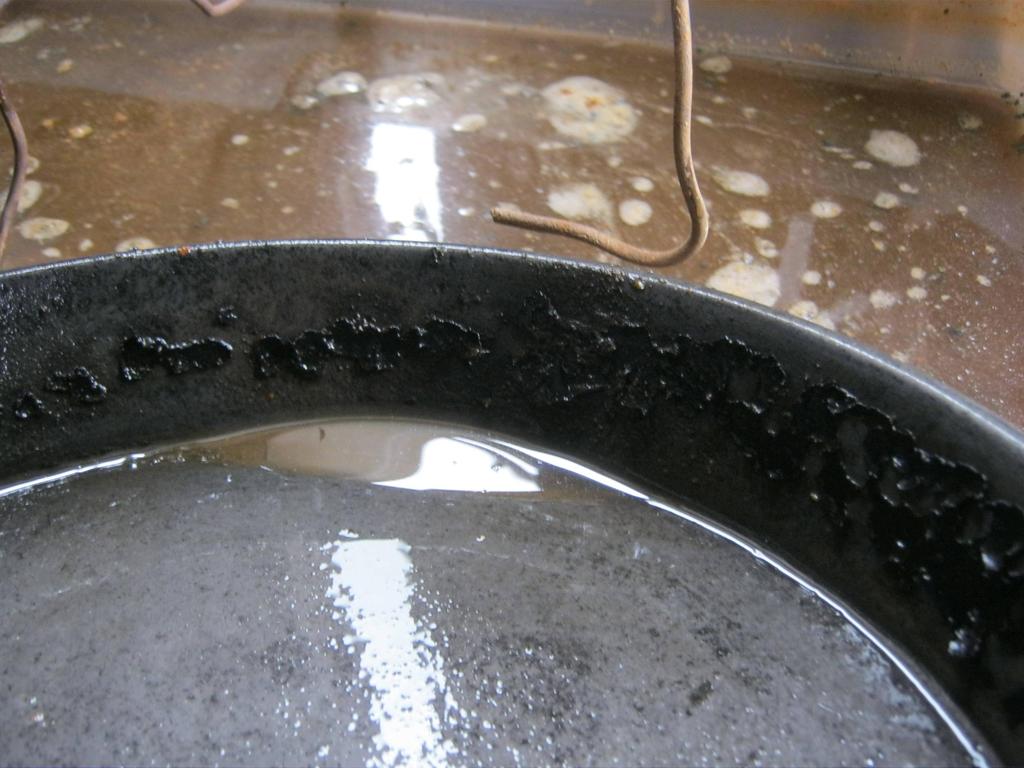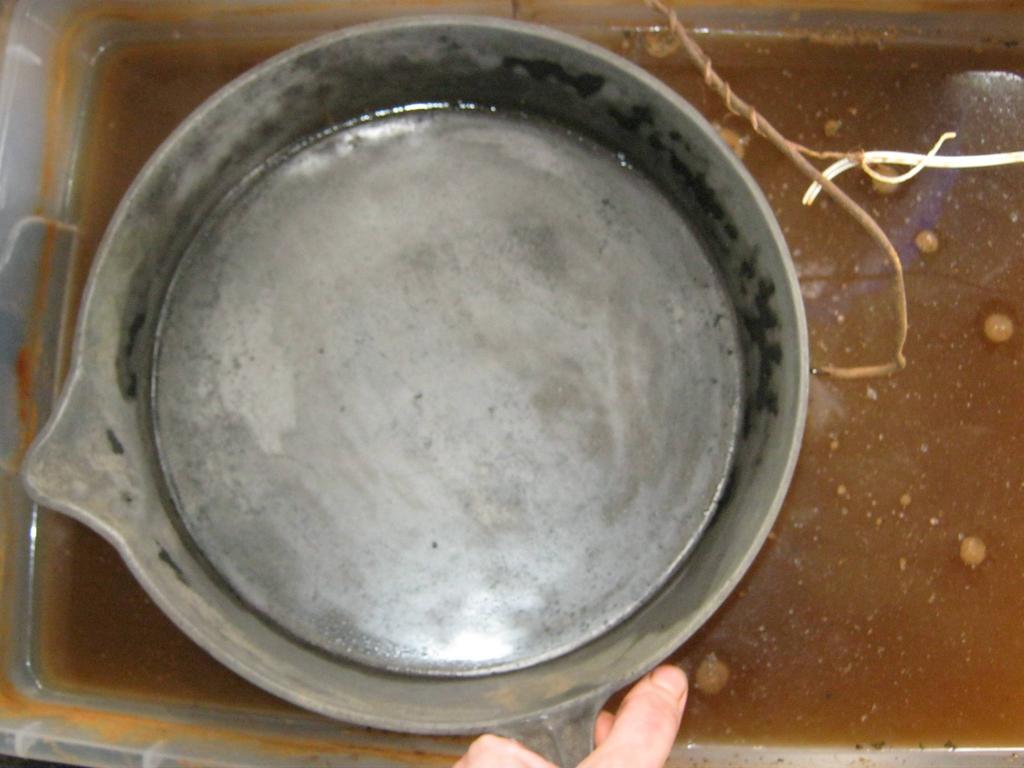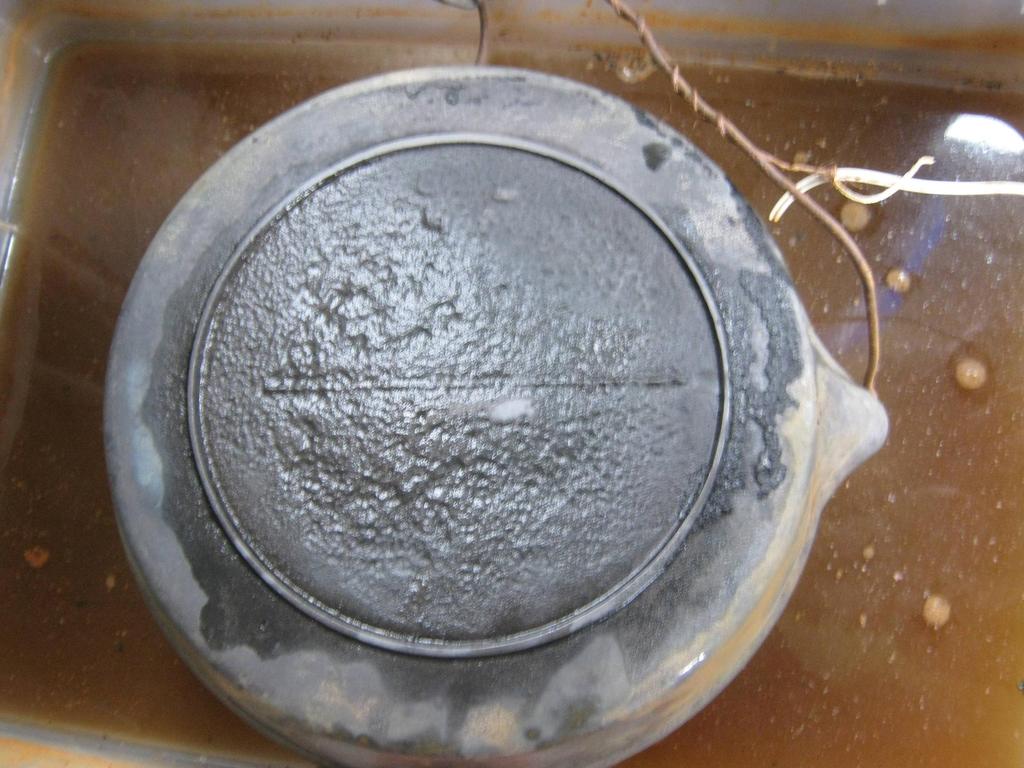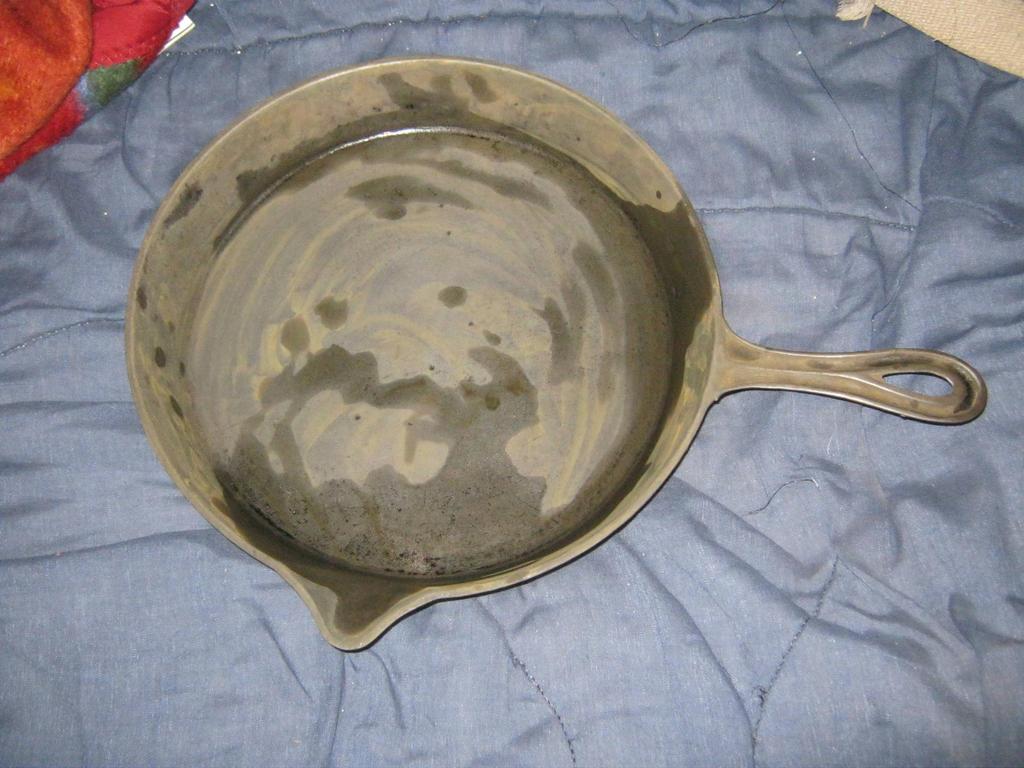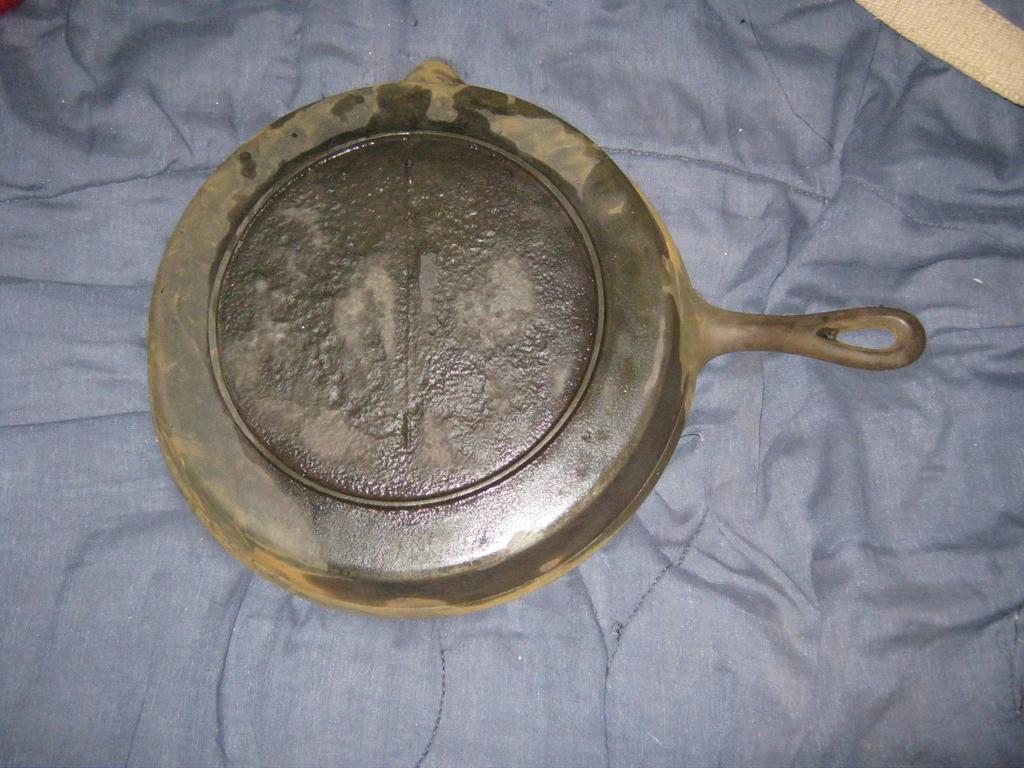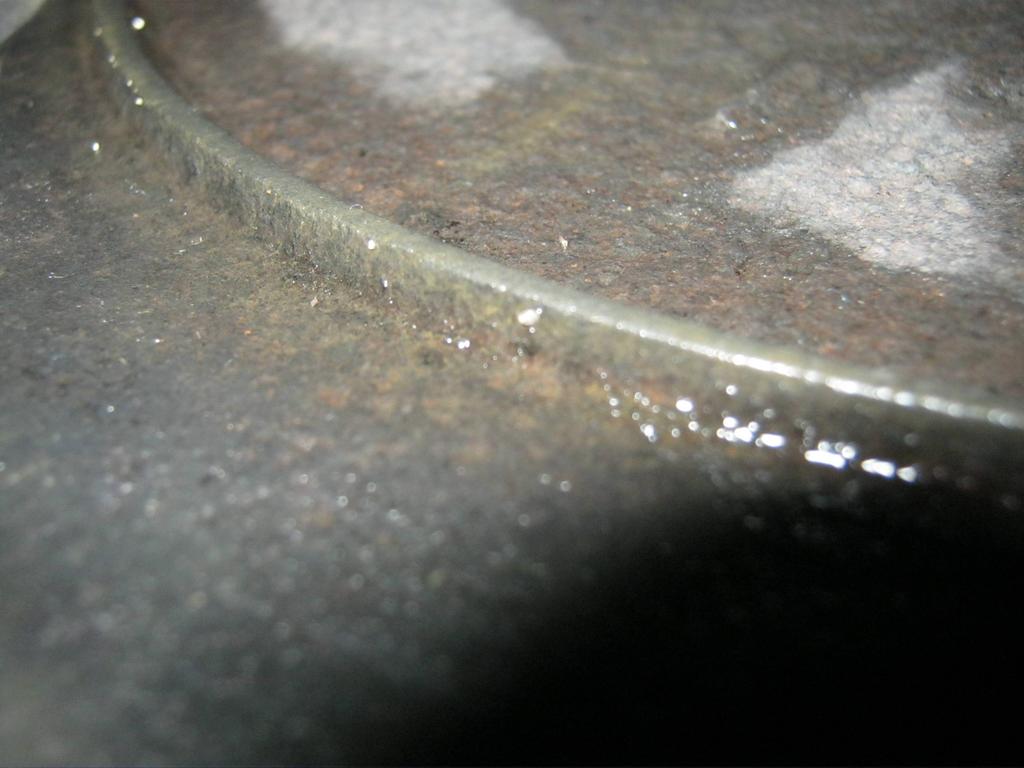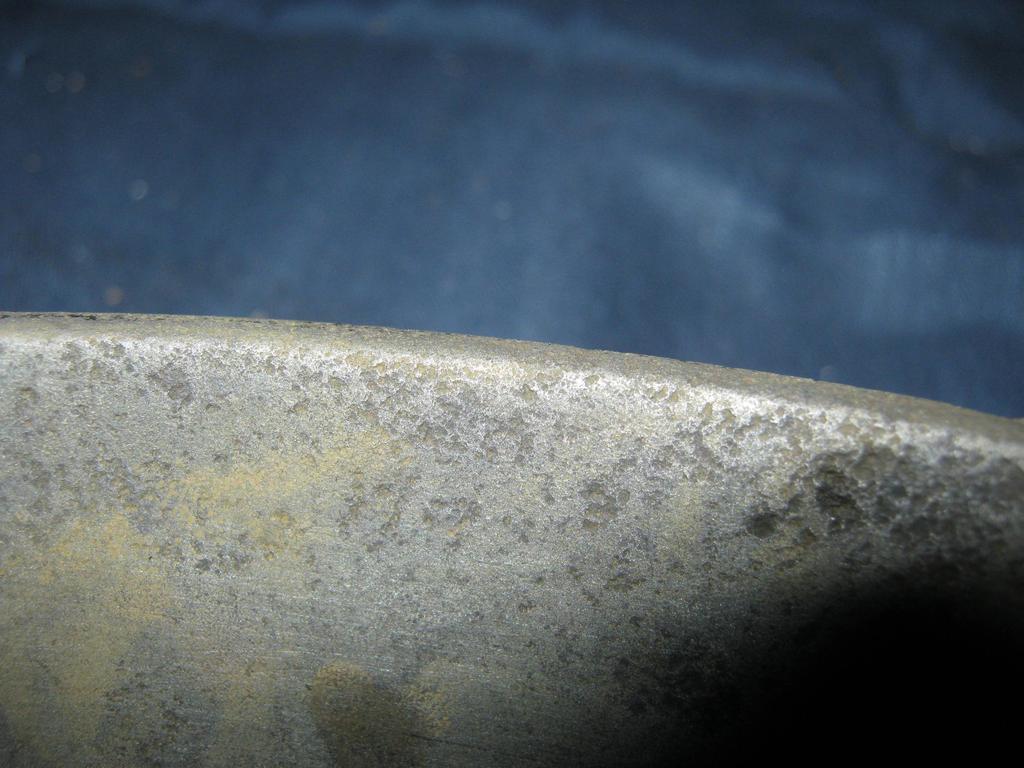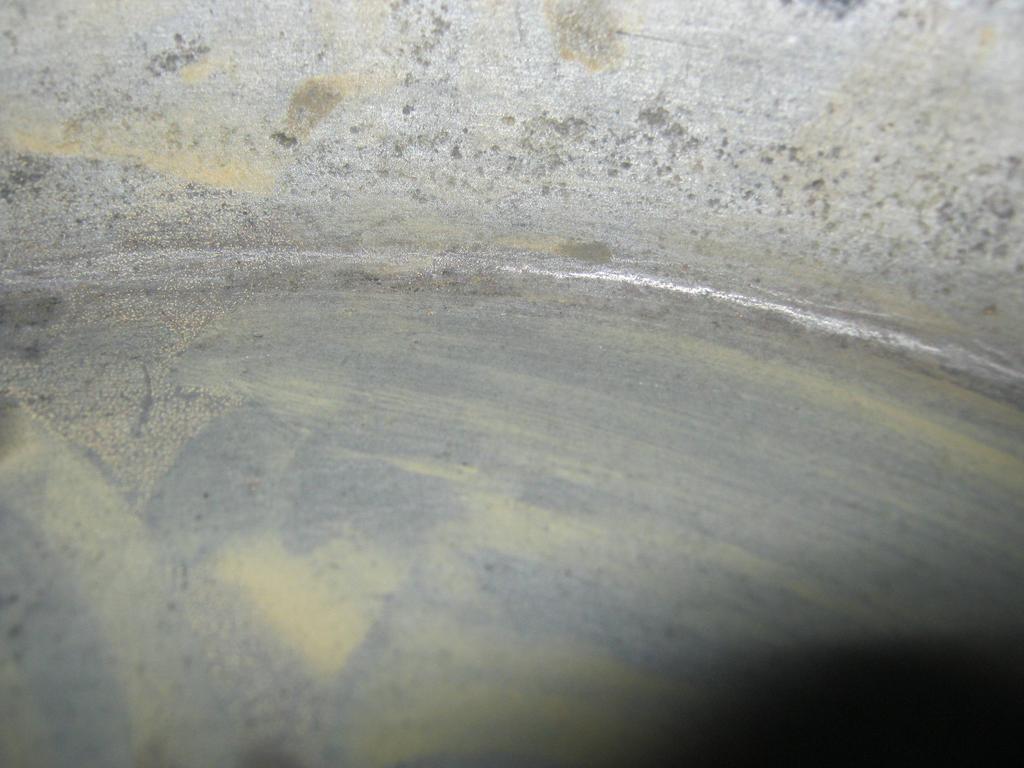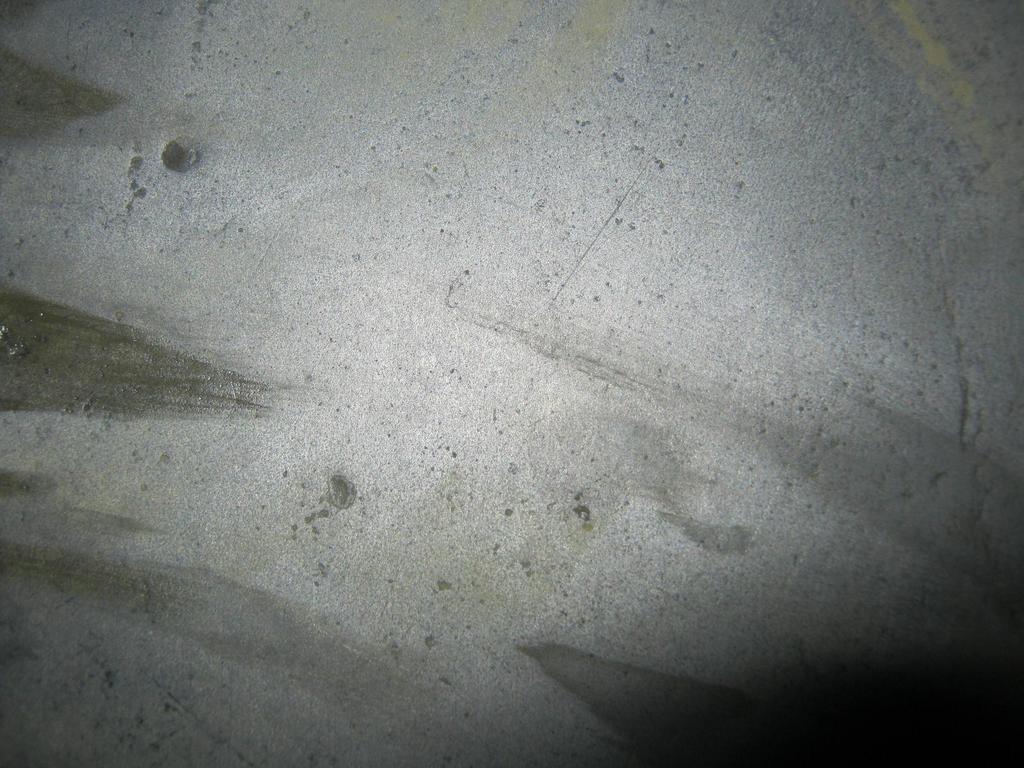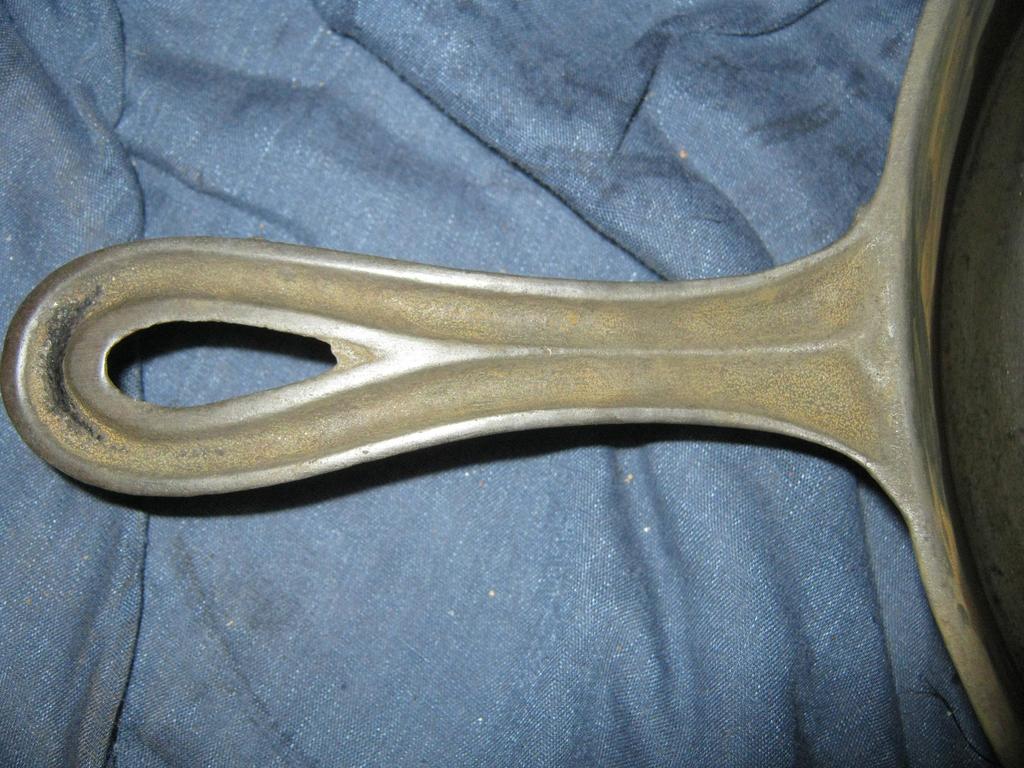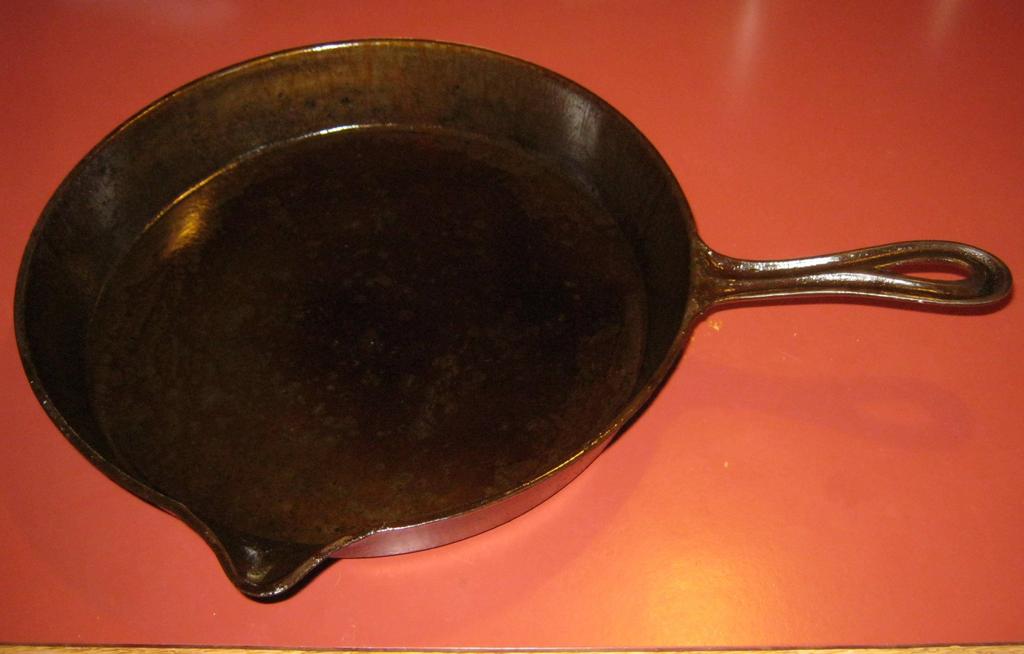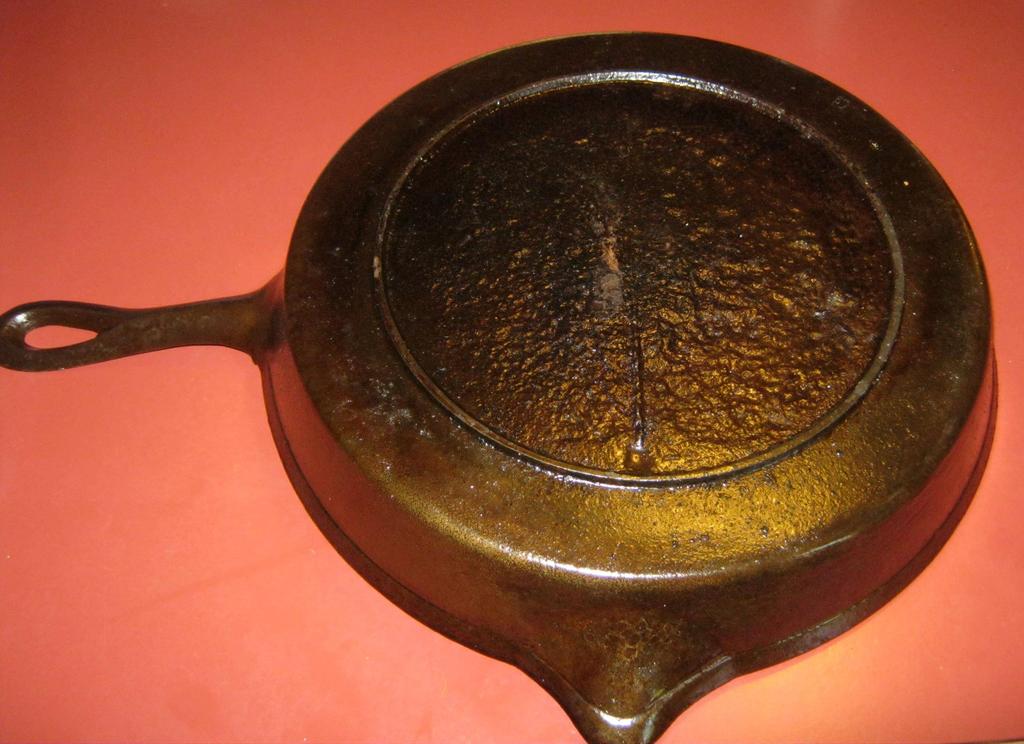I managed to find another old piece of cast iron. So I figured I would share me reconditioning it from start to finish.
This is an "Un-marked" "Un-named" item. Which complicates identifying it. How ever there are few key markings on from it's manufacturing that help indicate the date it was made.
This is an overview of the pan.
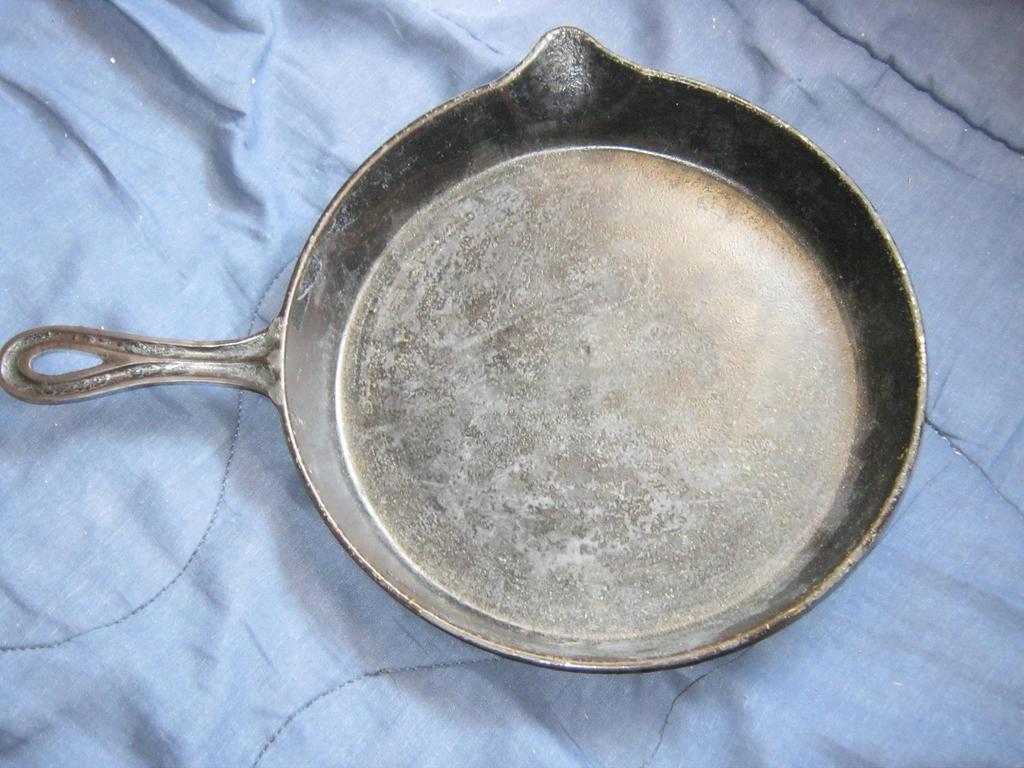
By looking at the pan I can tell it has recently been "scrubbed" and re-seasoned. A lot of the old season is left on it under the new. a good view of this is on the handle.

The bottom of the skillet is actually far more revealing.
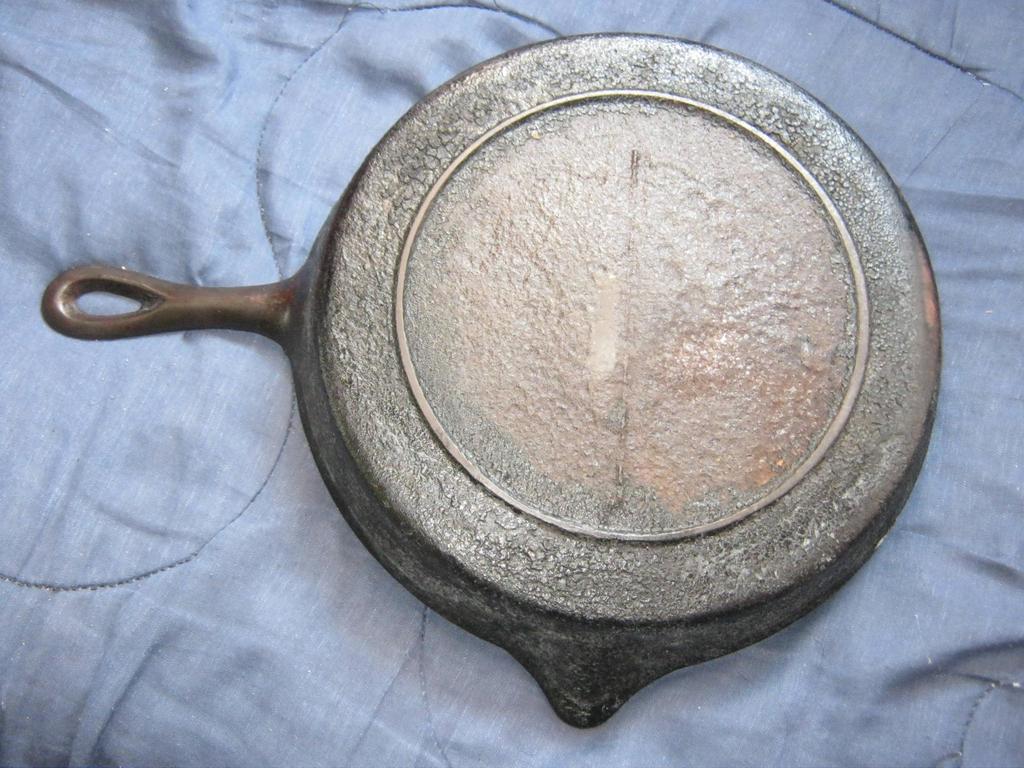
The first thing to note is the "gatemark", Next is the level of buildup from the seasoning, and the "deep" fire-ring.
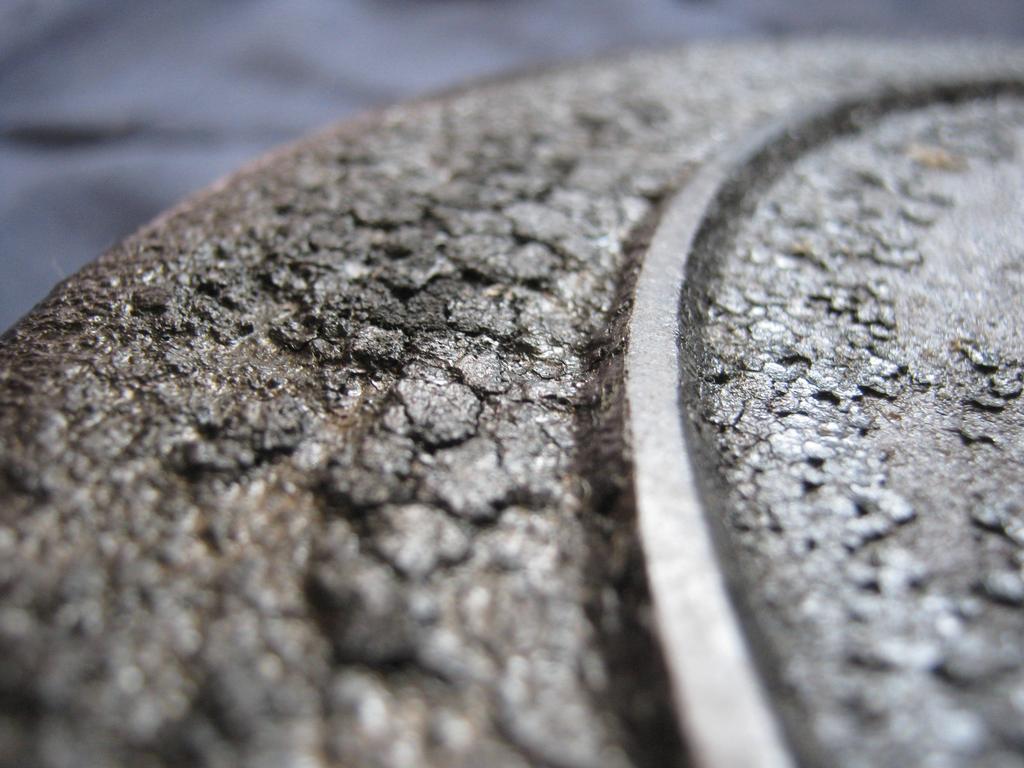
The other major factor you can not see in the pictures. This pan is very light, and thin compared to most cast. It's a #10, yet it is about half the weight of my lightest #8.
Here's what all these markings mean.
The "gatemark" which is the line down the middle of the bottom of the pan. Is found on skillets made from about 1700 to the late 1800's. The deep fire-ring also backs this up.The remaining seasoning build up also looks to be better then 80 years worth. Although Other factors can skew that. However how thin, and light it is; is what really helps narrow it down. Cast iron pans this thin and light were pretty much made between 1875 and 1940. Now consider the gatemark again, which had pretty much disappeared by 1890. Meaning this $10 skillet was "likely" made between 1875 and 1890. Most probably in some small local foundry.
I currently have the item in my electrolysis tank. I will give more updates at each step.
This is an "Un-marked" "Un-named" item. Which complicates identifying it. How ever there are few key markings on from it's manufacturing that help indicate the date it was made.
This is an overview of the pan.

By looking at the pan I can tell it has recently been "scrubbed" and re-seasoned. A lot of the old season is left on it under the new. a good view of this is on the handle.

The bottom of the skillet is actually far more revealing.

The first thing to note is the "gatemark", Next is the level of buildup from the seasoning, and the "deep" fire-ring.

The other major factor you can not see in the pictures. This pan is very light, and thin compared to most cast. It's a #10, yet it is about half the weight of my lightest #8.
Here's what all these markings mean.
The "gatemark" which is the line down the middle of the bottom of the pan. Is found on skillets made from about 1700 to the late 1800's. The deep fire-ring also backs this up.The remaining seasoning build up also looks to be better then 80 years worth. Although Other factors can skew that. However how thin, and light it is; is what really helps narrow it down. Cast iron pans this thin and light were pretty much made between 1875 and 1940. Now consider the gatemark again, which had pretty much disappeared by 1890. Meaning this $10 skillet was "likely" made between 1875 and 1890. Most probably in some small local foundry.
I currently have the item in my electrolysis tank. I will give more updates at each step.

